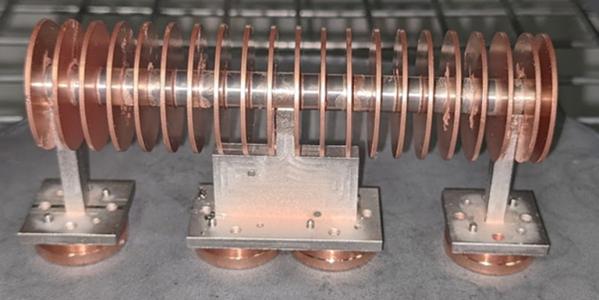High Power W-Band TWT

The objective of this activity is to develop a wideband slow wave structure suitable for high power TWTs operating at frequencies above 60 GHz for a new generation of high throughput telecom satellites. Simulation tools and manufacturing technologies will be investigated, traded-off and down selected. The most promising structure shall be integrated in a TWT breadboard and evaluated.
The millimeter wave domain is also known as the extremely high-frequency (EHF) spectrum ranges from 30 to 300 GHz. Early works on atmospheric propagation in EHF evidenced encouraging future usage for satellite communications. The allocated W-band for satellite services (71-76 GHz and 81-86 GHz) seems to provide a favourable attenuation window related to oxygen absorption. The exploitation of W-band may offer many advantages for wireless communications, which make it suitable for satellite links, such as: broad bandwidths for high data rate information transfer (e.g. satellite feeder link or point-to-point communications, ISL), high directivity and spatial resolution, reduced transmission power (due to high antenna gain), low probability of interference/interception (due to narrow antenna beam widths), small antenna and equipment size, reduced size of satellite and launch vehicles. Currently no operative W-band satellite communication system has been developed. The W-band can certainly be considered as a frontier for space telecommunication applications. Hence the development of the high power devices for the final amplification stage is critical for the physical layer level design in order to manage the trade-off between power efficiency, spectral efficiency, and robustness against link distortions. The aim of this activity is to investigate on TWT slow wave structures capable of meeting RF power levels in the order of 50 W with 5% of fractional bandwidth, assessing the availability of enabling design tools. Moreover, it is necessary to perform an assessment on manufacture techniques to verify their suitability to the required dimensional tolerances in high vacuum applications. The activity consists of the following tasks: 1) Literature survey on the existing TWT performances and slow wave characteristics. 2) Design and manufacture suitable slow wave structures. 3) Perform cold test measurements. 4) Design and manufacture a breadboard to verify the achieved performances. 5) Final reporting, conclusions and roadmaps towards higher TRL
